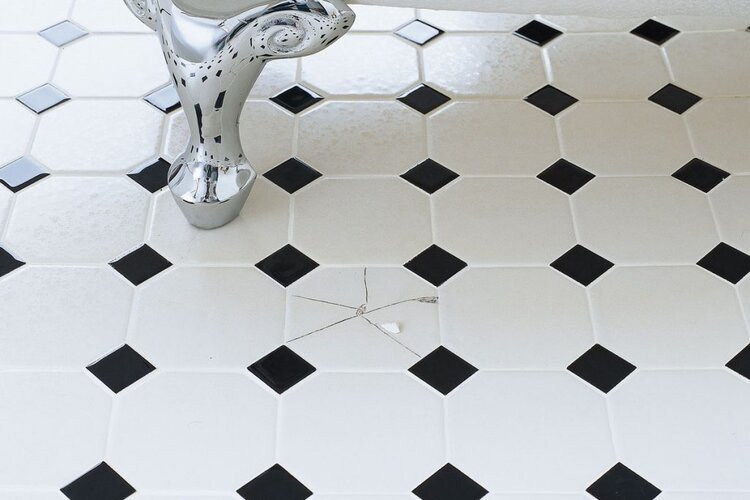Can HUGs be Digitised?
31st, March 2021
In a rapidly digitising world where the immediacy of information is becoming increasingly more important, are there any advantages in retaining your H.U.G (Home User Guide), also known as ‘home completion manuals’, in large binders of paper and/or box files?
Much like a V5C document (vehicle log book in old money), a HUG contains some service history documentation and details associated with a home – except there is a lot more of it – such as warranties, safety instructions, manufacturing details, architectural specifications, appliance manuals etc. As a result, HUGs can be notoriously difficult to manage, unnecessarily expensive to maintain and environmentally unsustainable given their sheer volume and amount of printing often involved.
This can cause a lot of downtime and potentially hurt customer relationships. A buyer shouldn’t have to feel anxious about receiving an intact HUG when they purchase a property, and the handover process shouldn’t be stressful for the seller(s) either. We are on a mission to address these issues and who better to ask than SME property developers who deal with them on a much larger scale?
We sent out surveys to residential property developers which can be viewed here and contacted experts in the field, as well as experienced homeowners, about how they deal with these issues. After extensive research, we found that there are six ways in which HUGs are typically managed and/or handed over.
6 WAYS TO HUG
1. Ignore It
What’s more embarrassing than going in for a hug only to be met with an awkward handshake, or be ignored altogether? This is sometimes the case for buyers who, upon sale completion, wait expectantly for their HUG and instead get incomplete paperwork or nothing at all beyond what is provided by their conveyancing solicitor. This is not illegal but a huge missed opportunity for providing value, peace of mind and potentially reducing labour and admin costs down the line.
2. In-House Standard Folder
Manuals, warranties, compliance papers and other relevant documents are affixed together, often in a rush and/or with varying degrees of organisational standards, popped into plastic sleeves and then filed into large ring binders by admin staff before being turned over. These can sometimes be a nightmare for homeowners to sort, arrange and catalogue appropriately.
3. In-House / Outsourced Bespoke Folder
Like an ‘In-House Standard Folder’, except these are usually organised and designed by professionals to reinforce positive brand representation. These are great for homeowners, albeit still a lot of paperwork and generally much more expensive and time-consuming for property developers – especially if production is outsourced.
4. In-House / Outsourced PDF
Some property developers have started scanning, or directly entering, their paperwork into digital formats such as interactive PDFs which are usually kept on company-branded memory drives and/or emailed to new homeowners. This eliminates the need for printing, binders and box files – and the process can also be outsourced to graphic design agencies or studios – but still leaves ambiguity when it comes to security and maintenance.
5. In-house / Outsourced Digitisation
At the time of writing, our research has shown no evidence of property developers using outsourced SaaS (Software as a Service) type solutions specifically designed for building, maintaining and interfacing HUGs – many instead rely on a variety of independent digital platforms as alternative solutions. Please get in touch with us if you’d like to find out more about them. On the other hand, we discovered two companies which can be found here and here that had started their own methods of in-house digitisation, though we were unable to gain feedback from them at the time of writing.
6. Online Cloud Storage
One of the more common solutions for SMEs is to use online tools like or to digitise their HUGs. These are widely integrated and easily accessible but they rely on subscription fees which balloon exponentially as online storage requirements increase and, since they are not specialised services, they cannot address all issues surrounding HUGs. The biggest disadvantage of using them is that, even after homeowners have downloaded their HUGs, property developers will have to keep paying subscription fees just to maintain access as data and information is updated over the years.
WHAT WE DID
We evaluated the effectiveness of our and ran the costs, savings and time spent on each across one, ten, a hundred, a thousand, ten thousand and twenty thousand homes to emulate both SME and large enterprise development businesses in the UK and test our hypotheses about digitising HUGs.
Our findings are as follows:
(a) Doing nothing is more expensive
Research shows that ignoring HUGs, whilst certainly attractive to property developers as it would save them money from the onset, will result in greater costs over time due to having insufficient property management systems and/or access to data i.e. more trips for snagging which increases labour costs, assessing for data that should have been previously available which increases admin and management costs. Amounting to roughly £10,560 of expenditure over 2 years per property unit.
(b) Physical products are twice the cost of digital
Digitising the production of HUGs has significant cost-savings for property developers as they grow. For example, the cost of a ‘Standard Folder’ is around £7,920 whilst a self-service digital platform that addresses the same needs costs around £4,224, if we include management time.
(c) Developers outsource as they grow
Trends show that many property developers prefer to outsource production of their HUGs to professional design companies, opting for ‘Outsourced Bespoke Folders’ despite how expensive they can become. We have identified that a digital solution can break-even costs once a property developer reaches 100 homes a year and reduce costs significantly once they reach 1,000 homes a year – amounting to roughly 25% savings in long-term costs.
(d) Paper takes a lot of time to manage
To save costs, instead of outsourcing, property developers may hire an in-house designer to produce bespoke folders – or they may even be content with relying on standard physical folders – but all that paper will still need physical space for storage, regular maintenance for condition upkeep, reprinting whenever data needs to be updated and the labour/management costs it takes to maintain organisational standards.
(e) Volume builders can make millions in savings
Large enterprise property developers that build more than 1,000+ homes a year spend roughly;
£3.3m outsourcing to tech companies’ managed services
£4.5m outsourcing to tech companies’ self-service tools
£5m outsourcing production of bespoke folders to professional design companies
These prices include all related costs such as subscriptions, software add-ons or upgrades, physical purchases, design, production, management, support and maintenance, warranty etc. Most of which are cut the more digitised a service becomes.
SUMMARY
Any advantages of a paper-based HUG are far outweighed by that of a digitised HUG, both in effectiveness and in sustainability. We now have the research and numbers to patently evidence this. What’s more is that all are typically only relevant at the point keys are handed over – hence why HUGs are often referred to as ‘home completion manuals’. But why wait until home completion? We propose that digitisation should start from property selection through to reservation, specification to purchase and after-sales management to fully capitalise on the advantages of a digitised HUG!
Better designed HUGs and the integration of technology will allow property developers to be 60-70% more efficient compared to traditional methods of HUG production, and economic savings only increase (instead of getting more expensive) as property developers grow from SMEs to large enterprise companies. Additionally, digital transformation reduces the environmental impact of HUGs production and management as well as provide a more streamlined experience for younger tech-savvy home purchasers of the future.
FINALLY
Few assumptions were made about the production costs and increased efficiency to create a model with which to facilitate the above analyses. If you’d like to access our data for review, have any questions or have feedback to give, please contact DadShed at [email protected]. We are open to feedback and eager to hear what you have to say!

Cost-benefit analysis of digitising home user guides calculated by the size of the property developer business and type of solution.
(B033)
Make Your Business Online By The Best No—Code & No—Plugin Solution In The Market.
30 Day Money-Back Guarantee
Say goodbye to your low online sales rate!







